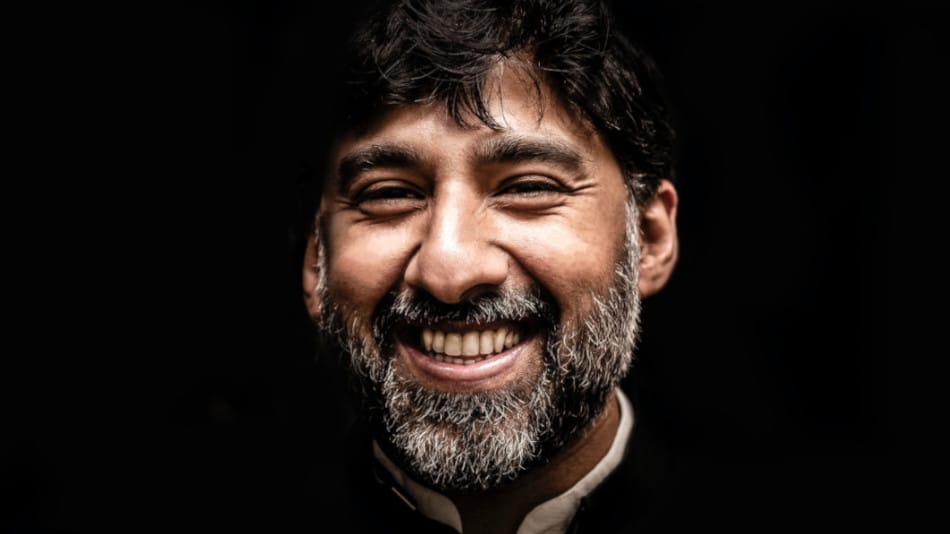These days it is essential to have a good profile photo to showcase your personal brand and image. This is true whether you are a social media personality, or a simple blogger. The team the team at Photofeeler decided to conduct a major study to determine what qualities make a perfect photo.
They wanted to know — if we set aside characteristics like gender, age and physical traits, to focus only on what we can easily control—what elements reliably produce a better professional headshot photo (for use on LinkedIn, Facebook, Twitter, etc.)?
The Study
The study gathered over 60,000 ratings of perceived Competence, Likability, and Influence of 800 profile photos in the Photofeeler database.

The photos were tagged to denote the presence of (and/or degree of) a list of characteristics. A small subset of these required unique programmatic tagging, as in photo brightness or darkness, in order to control absolute values.
They then composed an analysis that isolated each condition so that its impact could be measured independently. After examining each characteristic’s p-value to determine statistical significance, they compiled their findings to a list of reliable dos and don’ts.
The Results
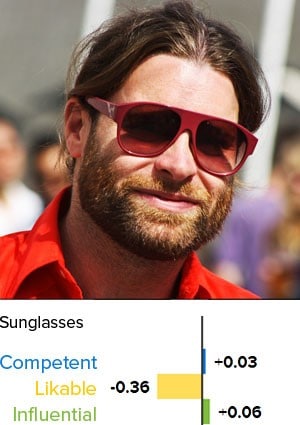
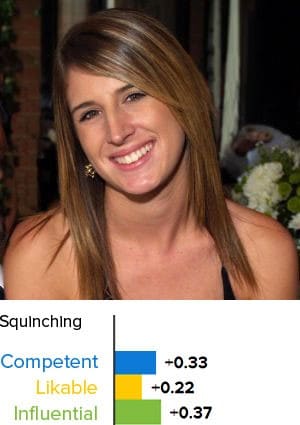
Here is an overview of what they learned.
Eyes
Eye Obstruction
Thinking about “playing it cool” with shades in your profile photos? Think again. Apparently covering your eye, for example with sunglasses, can significantly harm first impressions. However, it does depend on what is obstructing the eyes.
Sunglasses may be suave and mysterious, but there’s a down side. A sunglass wearer’s Likable score drops by an average of -0.36.
On the other hand, eyes covered by hair, glare and shadow didn’t make a difference in Likability, but brought down Competence and Influence scores by -0.29 and -0.31 respectively.
Squinching
Another effect of note was the squinch. This involves narrowing the distance between the lower eyelid and the pupil defined by well-known profile photographer Peter Hurley. The idea behind the concept is that wide open eyes commonly denote fear, while slightly squinted eyes portray comfort and confidence. As a consequence, squinching eyes garner an average gain of +0.33 for Competence, +0.22 for Likability, and +0.37 for Influence.
Face
A Defined Jawline
Another of Peter Hurley’s tips involves accentuating the jawline. And as it turns out, for good reason. A shadow line that outlines the jaw all the way around ups ones score by +0.24 for Competence, +0.18 for Likability, and +0.18 for Influence.
Note: If the shadow separating your chin and neck isn’t dark enough, this is one characteristic you might be able to improve slightly in Photoshop.
Smiling
By far the most significant characteristic identified in the study, is a special kind of smile.
A smile with teeth visible gains an average of +0.33 for Competence, +1.35 for Likability, and +0.22 for Influence.
Interestingly, a closed mouth smile has about half the effect on Likability and no statistically-significant effect on Competence or Influence.
Too much of a good thing can backfire, though. If you take your open mouth smile one step further into a laughing smile, you’ll get a Likability push up to +1.49 but lose your gains on perceived Competence and Influence.
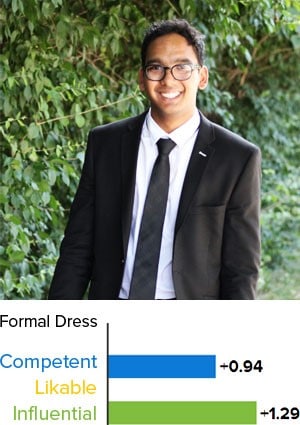
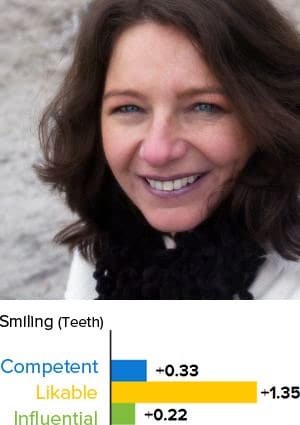
Style of Dress
If you thought clothes don’t make the man, think again. The greatest increase in perceived Competence and Influence was formal dress— an average increase of +0.94 and +1.29, respectively.
Survey designers marked a high level of formality as a dark-coloured suit over a light-coloured button-down shirt (with a tie, for men). Formality points were deducted for a missing tie or jacket. Bold or unusual colours and trendy details were judged as slightly less formal, with t-shirts and jeans were marked “informal.”
Area Shown
When it comes to the “amount” of person shown, they found that a bust (head and shoulders) or torso (head to waist) shot is preferable.
Face-only close-ups pulled Likability scores down by an average of -0.21.
Full body photos negatively affected both Competence and Influence by -0.29.
Setting
The most interesting thing the survey identified related to Setting was that it showed a lack of statistically-significant effect. This means you might not have to book a studio sitting for a professional look. Your personal branding or image is more important than where you are.
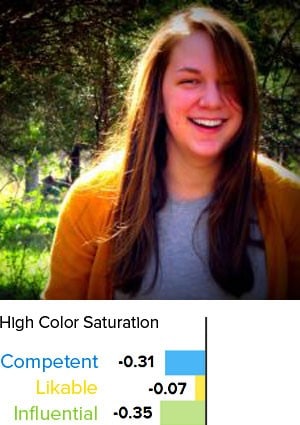
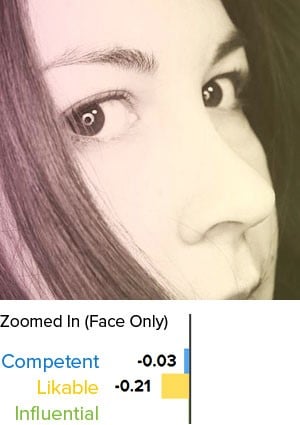
Editing
With photo editing, moderation is key and the results show you should avoid extreme special effects.
For instance, a dark photo (one that mimics night-time or a dark room) can drop your Likable score by an average of -0.38.
Very high colour saturation, on the other hand, tends to make everything worse. One’s perceived Competence drops by -0.31, Likability by -0.07, and Influence by -0.35.
Black and White
As for black and white photos, there was no statistically-significant effect— positive or negative.
Summary
In summary, don’t cover your eyes, try squinching, smile nicely with teeth visible, head and shoulders/waist, dress formally and don’t over Photoshop the image.
For more details on the survey results and an infographic, visit the Photofeeler website here: https://blog.photofeeler.com/perfect-photo/
To have your photo assessed online visit the Photofeler website

